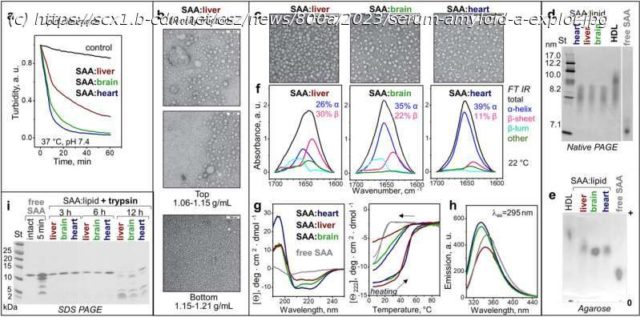Serum amyloid A (SAA) is a family of ancient proteins that can be traced from present-day humans back half a billion years to sea cucumbers and oysters. A new study by researchers from the Boston University Chobanian & Avedisian School of Medicine explores the link between the dual nature of this small plasma protein: how it works to clear toxic debris from wounds and inflammation sites, but also its role in forming fibrous deposits of the pathologic amyloid in vital organs such as the kidney and liver in the life-threatening disease AA amyloidosis.
Serum amyloid A (SAA) is a family of ancient proteins that can be traced from present-day humans back half a billion years to sea cucumbers and oysters. A new study by researchers from the Boston University Chobanian & Avedisian School of Medicine explores the link between the dual nature of this small plasma protein: how it works to clear toxic debris from wounds and inflammation sites, but also its role in forming fibrous deposits of the pathologic amyloid in vital organs such as the kidney and liver in the life-threatening disease AA amyloidosis.
“This work demonstrated that SAA acts as a universal protein detergent more potent than bile,” said Shobini Jayaraman, Ph.






